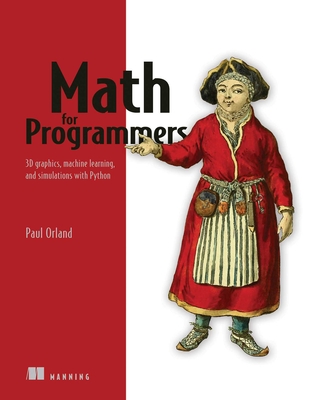Hands-On Intermediate Econometrics Using R: Templates for Learning Quantitative Methods and R Software (Second Edition)
Vinod, Hrishikesh D.
- 出版商: World Scientific Pub
- 出版日期: 2022-05-05
- 售價: $3,280
- 貴賓價: 9.5 折 $3,116
- 語言: 英文
- 頁數: 646
- 裝訂: Quality Paper - also called trade paper
- ISBN: 981125673X
- ISBN-13: 9789811256738
-
相關分類:
R 語言
海外代購書籍(需單獨結帳)
買這商品的人也買了...
-
 Introduction to Computation and Programming Using Python: With Application to Understanding Data, 2/e (Paperback)
Introduction to Computation and Programming Using Python: With Application to Understanding Data, 2/e (Paperback)$1,120$1,098 -
 $990Hands-On Machine Learning with Scikit-Learn and TensorFlow (Paperback)
$990Hands-On Machine Learning with Scikit-Learn and TensorFlow (Paperback) -
 Data Mining for Business Analytics: Concepts, Techniques, and Applications in R (Hardcover)
Data Mining for Business Analytics: Concepts, Techniques, and Applications in R (Hardcover)$4,630$4,399 -
 $1,188Deep Reinforcement Learning Hands-On
$1,188Deep Reinforcement Learning Hands-On -
 $1,805Foundations of Deep Reinforcement Learning: Theory and Practice in Python (Paperback)
$1,805Foundations of Deep Reinforcement Learning: Theory and Practice in Python (Paperback) -
 圖形演算法|Apache Spark 與 Neo4j 實務範例 (Graph Algorithms)
圖形演算法|Apache Spark 與 Neo4j 實務範例 (Graph Algorithms)$580$458 -
 $1,824Math for Programmers: 3D graphics, machine learning, and simulations with Python (Paperback)
$1,824Math for Programmers: 3D graphics, machine learning, and simulations with Python (Paperback) -
 $1,480Interpretable Machine Learning with Python: Learn to build interpretable high-performance models with hands-on real-world examples (Paperback)
$1,480Interpretable Machine Learning with Python: Learn to build interpretable high-performance models with hands-on real-world examples (Paperback) -
 Data-Driven Science and Engineering: Machine Learning, Dynamical Systems, and Control, 2/e (Hardcover)
Data-Driven Science and Engineering: Machine Learning, Dynamical Systems, and Control, 2/e (Hardcover)$1,600$1,568 -
 Graph Data Science with Neo4j: Learn how to use Neo4j 5 with Graph Data Science library 2.0 and its Python driver for your project (Paperback)
Graph Data Science with Neo4j: Learn how to use Neo4j 5 with Graph Data Science library 2.0 and its Python driver for your project (Paperback)$1,740$1,653
商品描述
How to learn both applied statistics (econometrics) and free, open-source software R? This book allows students to have a sense of accomplishment by copying and pasting many hands-on templates provided here.The textbook is essential for anyone wishing to have a practical understanding of an extensive range of topics in Econometrics. No other text provides software snippets to learn so many new statistical tools with hands-on examples. The explicit knowledge of inputs and outputs of each new method allows the student to know which algorithm is worth studying. The book offers sufficient theoretical and algorithmic details about a vast range of statistical techniques.The second edition's preface lists the following topics generally absent in other textbooks. (i) Iteratively reweighted least squares, (ii) Pillar charts to represent 3D data. (iii) Stochastic frontier analysis (SFA) (iv) model selection with Mallows' Cp criterion. (v) Hodrick-Prescott (HP) filter. (vi) Automatic ARIMA models. (vi) Nonlinear Granger-causality using kernel regressions and bootstrap confidence intervals. (vii) new Keynesian Phillips curve (NKPC). (viii) Market-neutral pairs trading using two cointegrated stocks. (ix) Artificial neural network (ANN) for product-specific forecasting. (x) Vector AR and VARMA models. (xi) New tools for diagnosing the endogeneity problem. (xii) The elegant set-up of k-class estimators and identification. (xiii) Probit-logit models and Heckman selection bias correction. (xiv) Receiver operating characteristic (ROC) curves and areas under them. (xv) Confusion matrix. (xvi) Quantile regression (xvii) Elastic net estimator. (xviii) generalized Correlations (xix) maximum entropy bootstrap for time series. (xx) Convergence concepts quantified. (xxi) Generalized partial correlation coefficients (xxii) Panel data and duration (survival) models.






























